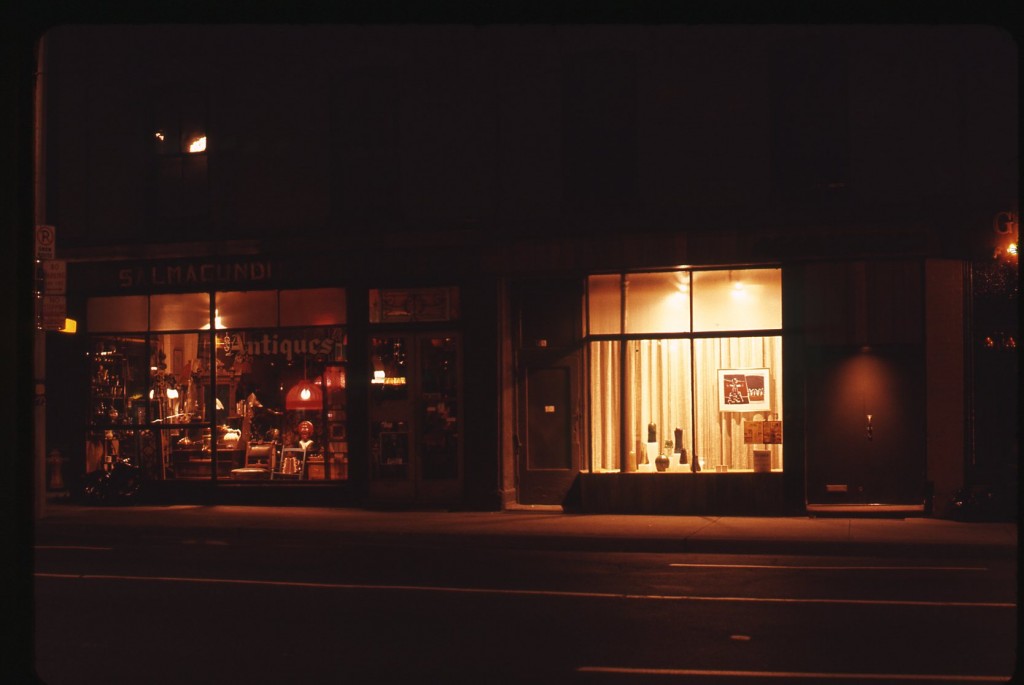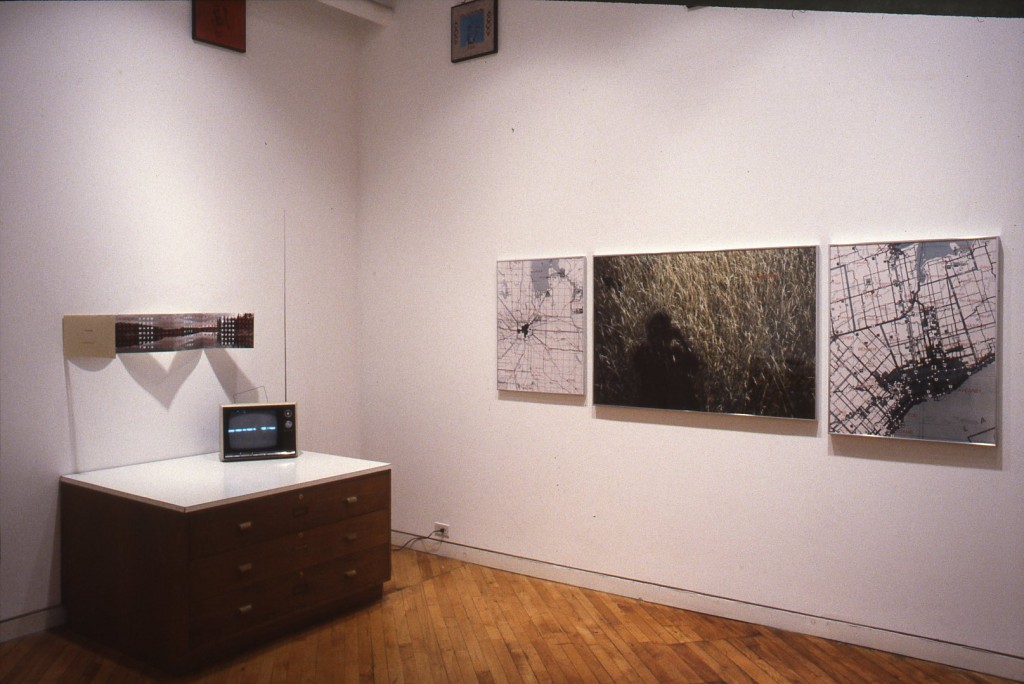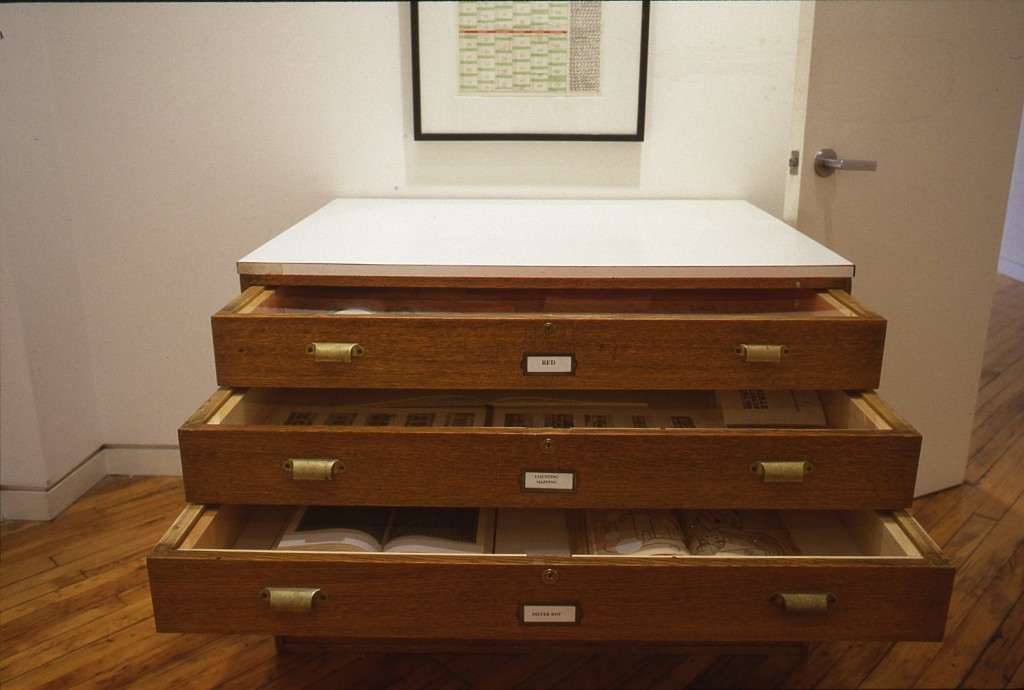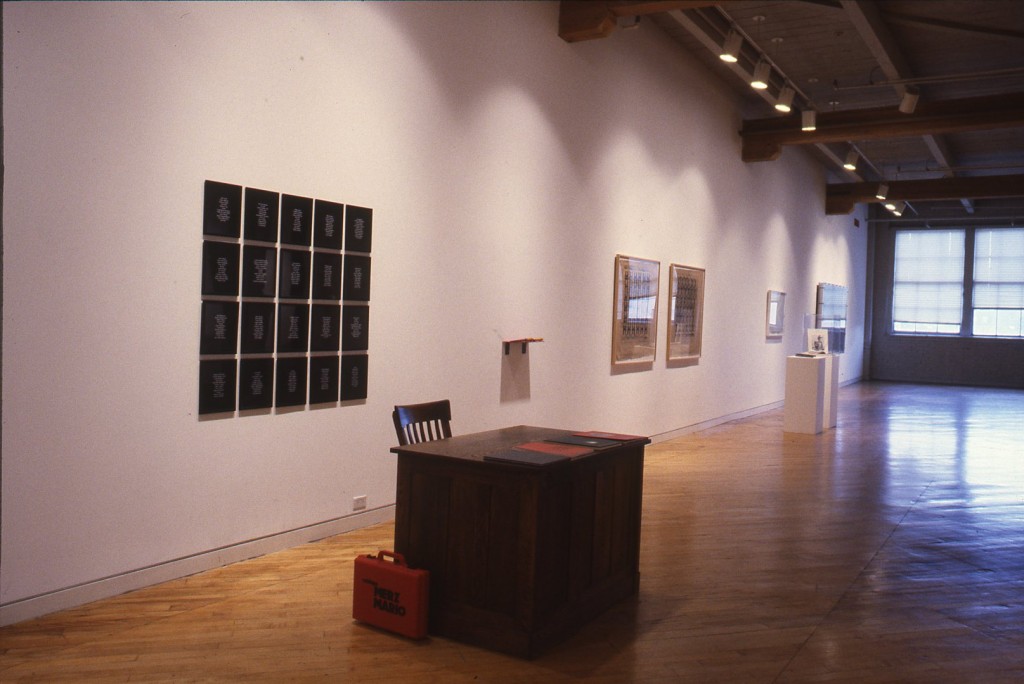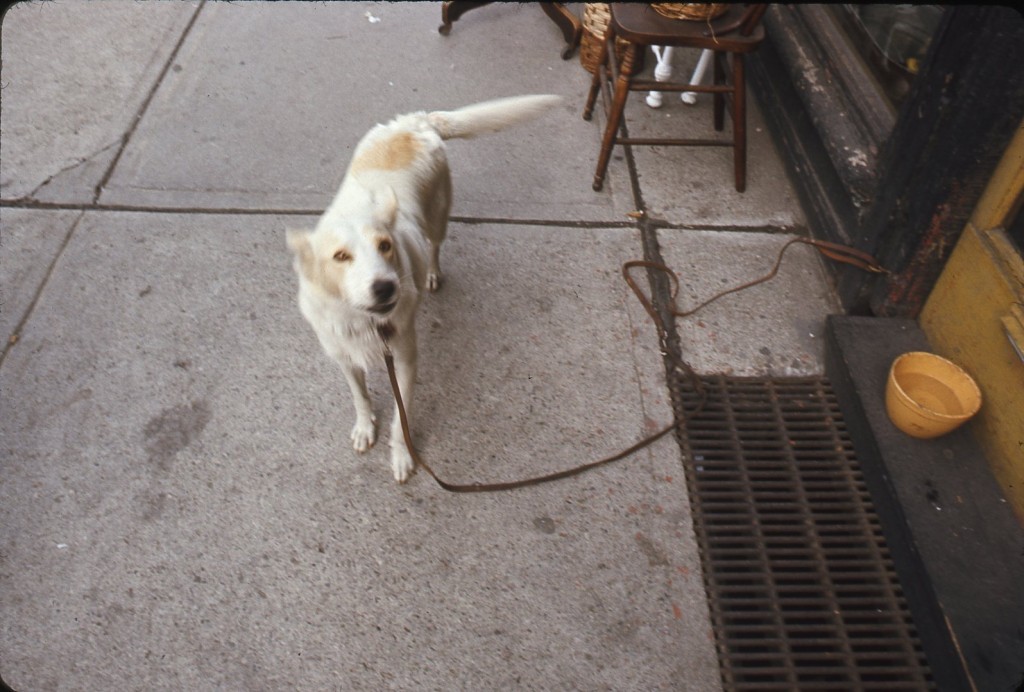We came to know Sophie as a regular eccentric of Jarvis and King area where we located our first gallery. She passed by our storefront every day on the way to the the Society for Crippled Civilians (known in the neighbourhood in those days affectionately as ‘the Cripps’) dragging a cart, empty on the way and full on the way back. Sophie lived in the building she was born in on the North east corner of King and Market Street across the road from the St. Lawrence Hall. Her father had run a printing shop out of the building and the family lived in the quarters above. That was many years earlier. In 1968, Sophie, already in her senior years, ran a second hand shop (cum antique store) in the storefront. She was a character. One could enter her store and look under her watchful eye but only a few were selected by her to take any of her treasures home. Gradually we gained her trust and acceptance as fellow shopkeepers.
Sophie often found her treasures at the Crippled Civilians store (later to be renamed Goodwill Industries) at the North east corner of Jarvis and Adelaide. That’s where Sophie was headed with her cart to check out their daily arrivals. In those days you could find some good stuff, including antiques.
Lynn Brown opened Salmagundi Antiques next door to us at 75 Jarvis Street in 1969. With Grumbles coffee house on one side and Salmagundi on the other our location was becoming a destination. Jarvis Street was still the home of the CBC at the time, with a studio complex several blocks east of us down King, and many CBC people discovered us on their way to the Saturday St. Lawrence Farmers Market. Word travelled fast.
Crippled Civilians was also a daily destination for Lynn Brown. If there was something she could not use but felt we might she would let us know. On one such occasion she had discovered three very old, large oak drawer units , probably used originally in an architect’s office for plans. David and I headed over, purchased all three for $50, refinished them and are still using them to this day, mostly for storage of unframed work. Occasionally they have become part of exhibitions as seen here adapted with plastic sheets for viewing of books and multiples in the LIST exhibition in 1996. Probably the best $50 we have ever spent.
Other finds were a desk that was used by David in the back office at our Front Street location from 1972 – 1982. I used the desk in my small front office at the 80 Spadina Avenue location, 1982 to 2000. It also was commandeered for the LIST show.
Shortly after Lynn opened her store she adopted her dog, Sally, from the Humane Society. A few of the older inhabitants of the area were war veterans living in the rooms in nearby buildings. Sally was a favourite of many. Out of their small pensions they would bring by treats for her, sit for a while or take Sally for walks.
Lynn kept her store open on Sundays. On sunny warm mornings we would head down from our 69 Jarvis Street rooms to her store with a plate piled high with freshly made fried egg and bacon sandwiches, take over some of her chairs and enjoy a Jarvis Street breakfast with her and Sally.
Jarvis Street in those days was almost deserted, especially in the morning on Sundays. Occasionally a small parade, always with a band and veterans and cadets from armed forces units would march by going from the Armoury at Queen and Jarvis to St. James Cathedral, a regimental church for several groups. Sometimes they would form up on equally deserted Adelaide street, behind St James, then march east to Jarvis, along King to take the Salute in front of the cathedral, and back up to where they had started, having gone full circle of the block. They were used to having few spectators on their Sunday marches, least of all younger people, looking suspiciously like hippies, hanging out of the second and third story windows or lounging on old chairs in front of Salmagundi, waving them on. It was their parade, of course, but with us the only people on that block, it seemed like our own personal one.
